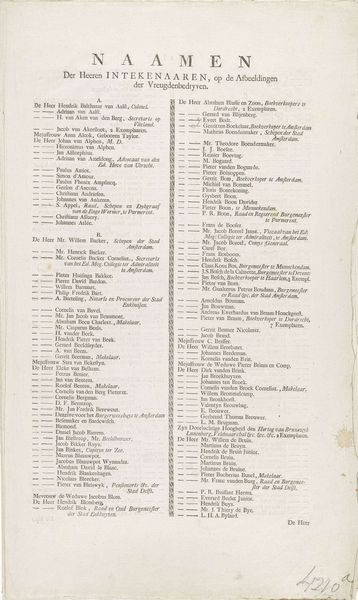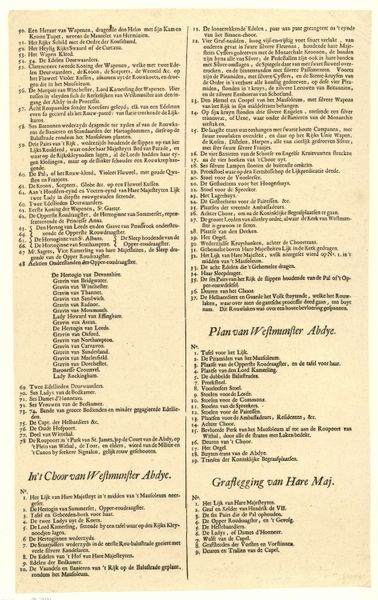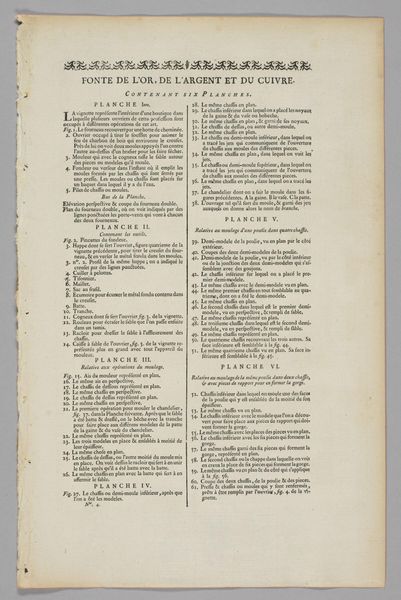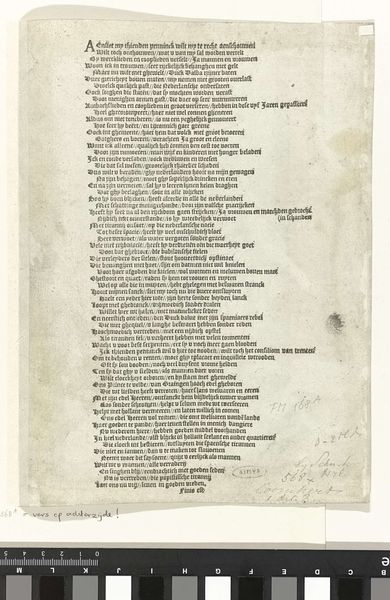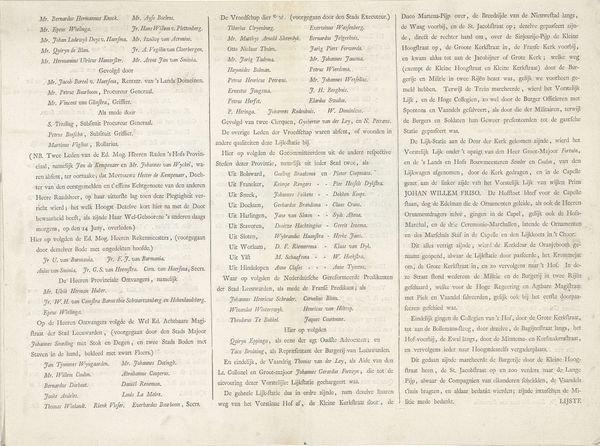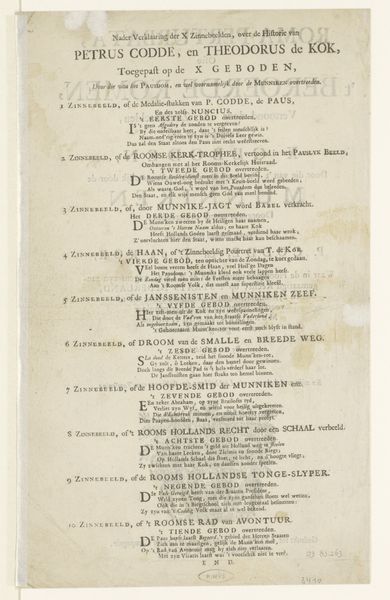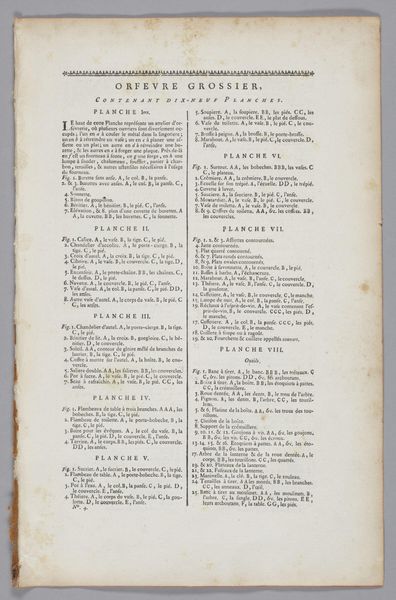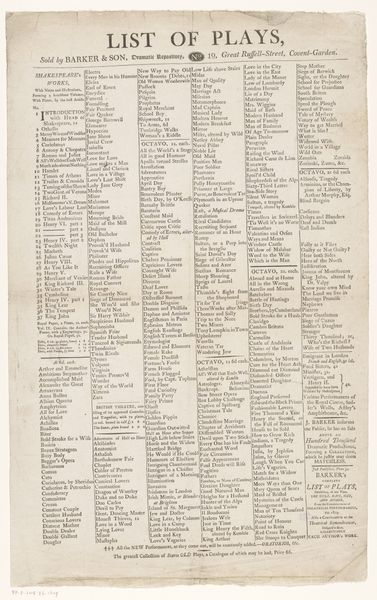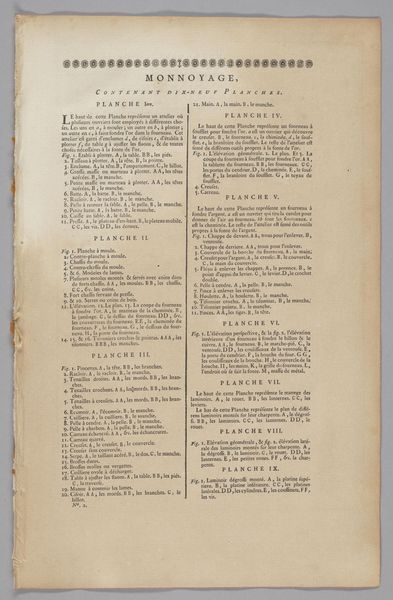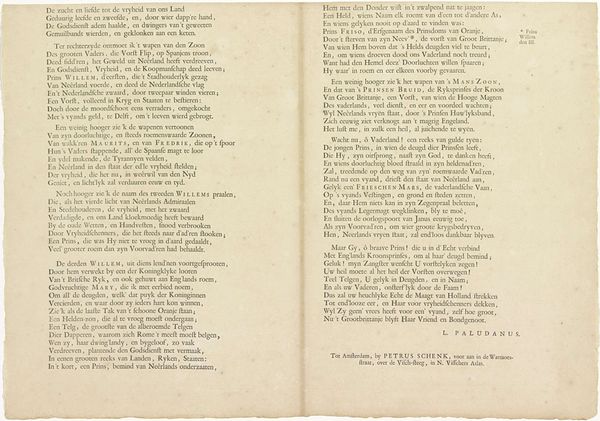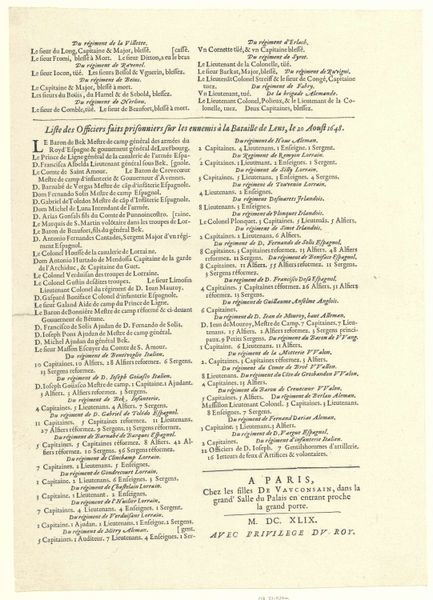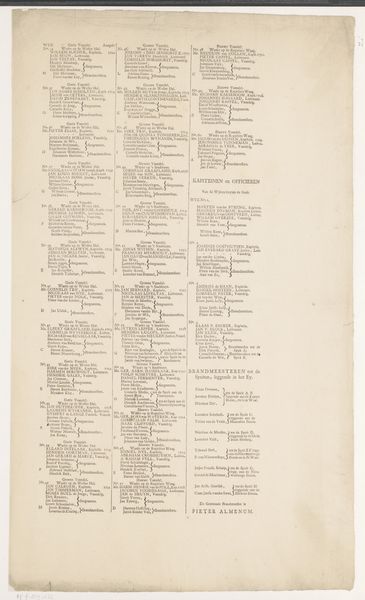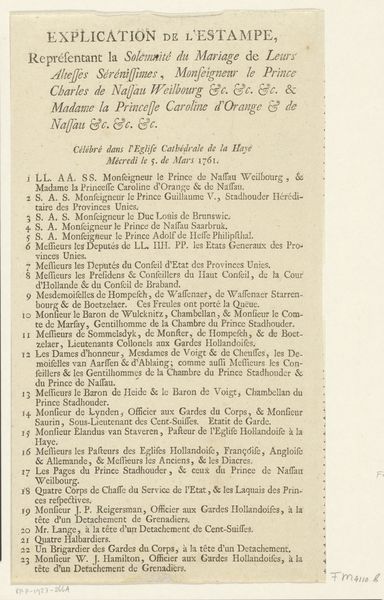
graphic-art, print, engraving
#
graphic-art
# print
#
text
#
engraving
Dimensions: height 467 mm, width 290 mm
Copyright: Rijks Museum: Open Domain
Curator: Here we have Johannes de Groot's "Register van afbeeldingen uit het Nieuwe Testament," an engraving from 1791. At first glance, it appears to be a simple list, perhaps quite functional, but I suspect there's more to it than meets the eye. Editor: It does look like a fairly straightforward index or table of contents, almost like a flyer. I’m intrigued by its layout with parallel columns in different languages. How does the cultural context inform this piece? Curator: That bilingual format, with Dutch and French, tells us a lot about the intended audience. In the late 18th century, French was the language of diplomacy, of the aristocracy and a certain educated elite. Including it suggests an attempt to reach a broader, more international readership, pointing to a sophisticated awareness of cultural exchange and the art market at the time. It asks us: who was empowered enough to create a parallel edition in another language? Editor: That’s fascinating. So, it's not just a practical guide but also a social marker, reflecting the complexities of language and class. Is the inclusion of religious subjects meaningful? Curator: Absolutely. Consider the socio-political climate: Religious imagery, particularly depictions of New Testament scenes, carried immense weight. Were these images tools for social control? Inspiration? Was the publication intended for widespread consumption, or targeted at specific segments of society? Editor: It’s incredible how a seemingly simple index opens up so many questions about the society it came from. I see how understanding its historical and cultural context makes the artwork far more engaging. Curator: Indeed. It reminds us that even the most unassuming objects can offer valuable insights into the past. And that art never exists in a vacuum, but is instead shaped by the institutions and power dynamics that surround its creation and reception.
Comments
No comments
Be the first to comment and join the conversation on the ultimate creative platform.
